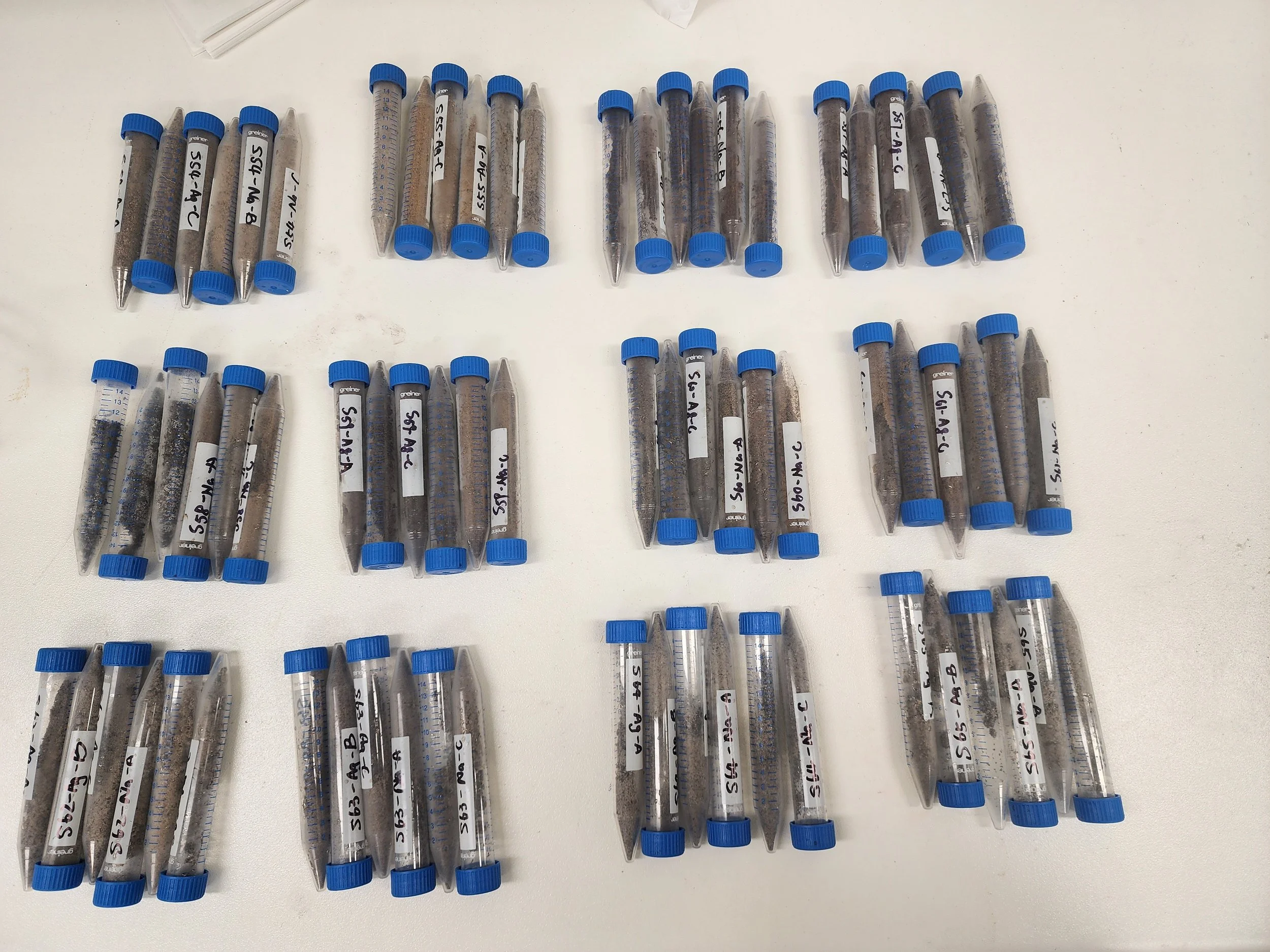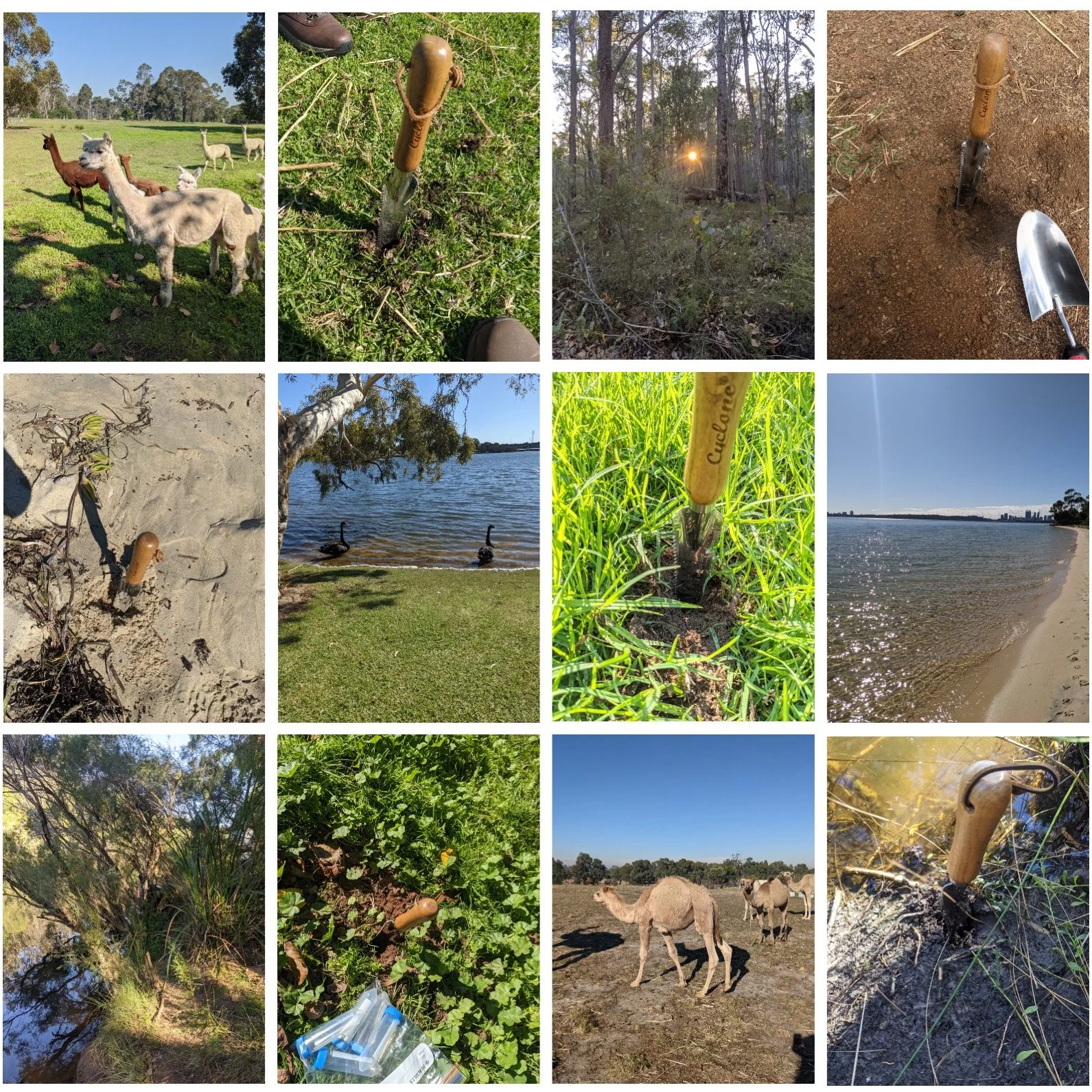Australian soils are rapidly expanding the known RNA virosphere
by sabrina sadiq, the university of sydney (australia)
Soils and sediments harbour extraordinary biodiversity, with up to 10¹⁰ microbes per gram of soil. As RNA viruses likely infect all forms of life, soils represent a vast yet underexplored reservoir of viral diversity. Surveillance has historically focused on animals of economic or agricultural significance, leaving soil viromes largely overlooked. Increasing evidence now links viruses to global biogeochemical cycles through interactions with their soil-dwelling hosts, including plants, invertebrates, fungi, and especially bacteria. DNA viruses, for instance, enhance bacterial extremotolerance by mediating gene transfer or influence carbon metabolism through host lysis. Comparatively, the role of RNA viruses in maintaining soil functionality remains poorly understood.
My introduction to soil virology began with an expansive metatranscriptomic (i.e., the total RNA present in a sample) data set of diverse soils and sediments collected across China. We started to untangle the relationship between virome composition and soil properties like pH, nutrients, and organic carbon content, and this relationship depended broadly on the host organisms of the focal viruses. Most strikingly, these data permitted the discovery and characterisation of 6,624 novel RNA viruses, proving to me that if I wanted large-scale virus discovery, soil was the place to be.
Time to set my sights back home. The Australian continent and its native flora and fauna have evolved in isolation for millennia, resulting in unique biomes and biodiversity not found anywhere else on Earth. Surely, this means Australia harbours equally unique viruses! Applying similar metatranscriptomic methodology to farmland soils and riverbank sediments taken from New South Wales and Western Australia (the eastern and western coasts of Australia, respectively), I identified 3,935 novel RNA viruses, including several clades of exclusively Australian viruses, implying instances of continent-specific evolution.
Getting ready to extract RNA from a subset of the >300 soil samples collected from all across Australia.
After several pilot runs and many attempts at optimising our sample handling and storage protocols, we were finally able to set out on an expansive, country-wide sampling campaign to uncover the comprehensive Australian virome. This massive-scale endeavour, while still in progress, has already revealed tens of thousands of potentially novel viruses spanning all major RNA virus clades, including those with microbial, plant, and animal hosts. As is typical of soil, the majority fall within microbe-associated viral taxa. Additionally, we’re seeing the influence of more specific ecological factors like local vegetation and individual mineral and nutrient contents on viral abundance and diversity.
The vast ecological diversity of environments we’ve sampled from, and some of the friends we made along the way!
The results of this excitingly expansive campaign will mark a striking contribution to the global virosphere, showcasing the incredible reservoirs of viral diversity in Australian terrestrial environments. These massive new clades being discovered will likely represent new genera or even new families, as well as shake up our understanding of the host ranges of various known taxa. The evolutionary and ecological characterisation of these novel viral clades will surely enhance resolution of deep evolutionary events and allow us to determine the relationship between Australian soils and the diverse RNA viruses residing in them.



